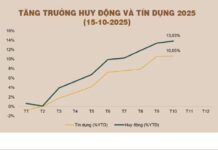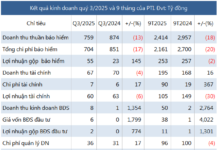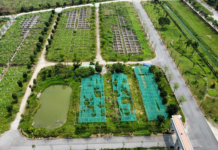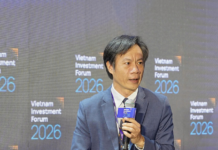This is the basic content about housing presented in the Decision No. 179/QD-TTg approving the Construction sector development strategy until 2030, with a vision to 2045, signed by Deputy Prime Minister Tran Ha on February 16, 2024.
By 2045, the Construction sector aims to ensure the capacity to design and construct modern, complex construction works in various fields, at all scales, and have the ability to compete and expand the market internationally. The urbanization rate is among the high average of ASEAN and Asia. The urban system is connected and synchronized, balanced between regions and provinces. The urban technical infrastructure system develops synchronously to meet the needs and pace of urban development. Housing development meets the demand for new construction and renovation of housing for people. The real estate market develops sustainably, healthily, and transparently.
EXPANDING HOUSING TYPES
In terms of real estate market management, the Strategy emphasizes the focus on building a transparent mechanism to assess real estate value according to market mechanisms. Address the basic housing requirements for urban residents, diversify housing types; have supportive policies to promote social housing development.
Specifically, the Strategy highlights the following solutions:
First, completing, amending, supplementing some policies on commercial housing development, social housing, public housing; resettlement housing, target programs, individual and household’s separate housing. Focus on removing legal obstacles, enhancing decentralization for localities to expedite renovation, reconstruction of old apartment buildings, expired works, houses located along canals, poor residential areas in urban areas. Researching mechanisms to encourage the formation and development of housing and real estate funds.
Second, focusing on effectively implementing the National Housing Development Strategy until 2030, vision to 2045, the Program “Investing in the construction of at least 1 million social housing apartments for low-income people, workers in industrial parks phase 2021 – 2030” and local housing development programs and plans. Enhancing the state management function in housing development management, regulation to ensure the balance of housing supply and demand.
Third, formulating policies to encourage commercial housing development according to average-sized projects with prices suitable for the payment capacity of market participants. Researching and proposing housing support programs for poor households in rural areas according to new poverty criteria; housing support program for poor households to build storm-resistant, flood-resistant houses, and other housing support programs. Supplementing mechanisms, policies to encourage and incentivize organizations, individuals to participate in the development of green, energy-saving housing and low greenhouse gas emissions housing, applying digital technology.
Fourth, diversifying housing types; increasing the proportion of project-based housing development and apartment buildings; having supportive policies to promote the development of rental and affordable housing. Promoting the development of social housing, low-cost housing towards reducing dependence on state budgets; providing capital for low-income and disadvantaged individuals to borrow in a preferential, long-term manner for stable housing. Innovating the management and development models of social housing, especially housing for workers in industrial zones; researching, issuing separate mechanisms, policies for investing in housing for industrial workers, considering workers’ housing as an essential infrastructure of industrial zones.

Fifth, researching new, modern housing models suitable for technological development, environmental requirements for green, clean, beautiful environment. Improving policies, strengthening post-investment management of housing construction, issuing regulations for managing the handover, acceptance, maintenance of technical infrastructure, social infrastructure in housing development projects.
Sixth, urging localities to expedite the process of reviewing, evaluating old apartment buildings and implementing renovation, reconstruction of old apartment buildings. Strengthening inspection, supervision of the implementation of the centralized administrative center construction investment; efficient management of public housing funds.
DEVELOPING A TRANSPARENT AND STABLE REAL ESTATE MARKET
The Strategy also sets requirements for strengthening management to ensure the stable development of the real estate market, transparent information, and compliance with supply-demand laws.
Accordingly, the focus will be on implementing the following solutions: developing diverse types of real estate to meet the needs of economic and social development, ensuring the balance of supply and demand in each segment, each locality, and each stage. Completing legal corridors, suitable organizational models for managing, controlling the real estate market, and effectively using the value added from land when urban infrastructure expands.
Attracting social resources, encouraging economic entities to invest in developing real estate goods, especially social housing investment, affordable commercial housing, production and business works, technical infrastructure works, and social infrastructure in urban areas.
Concentrating on building a database, by 2025 completing the national housing and real estate market information management system to ensure connection and interoperability with the national land database. Building a transparent mechanism to assess real estate value; researching, perfecting tax and fee policies regarding real estate to encourage the effective use of housing and land.
Creating conditions for economic entities to participate in the real estate market according to market mechanisms. Regularly monitoring the real estate market situation, proactively controlling, regulating to promptly adjust, remove difficulties, limitations, shortcomings of mechanisms, policies, laws, natural disasters, epidemics… to develop a stable, sustainable real estate market, gradually overcome the discrepancy in supply and demand, ensuring transparency and openness.
Effectively implementing the National Assembly and the Government’s solutions to overcome difficulties, obstacles in implementing real estate projects for localities, businesses in Hanoi, Ho Chi Minh City, and some central-affiliated provinces, and cities. Researching regulations guiding the process, sequence, procedures for implementing commercial housing projects, social housing, and urban areas.
According to the Strategy, the State plays a role in orienting and regulating the real estate market, construction, and building materials development. Strengthening the role of the State in urban planning, providing a basis for planning, implementing assigned tasks and development objectives according to approved plans and orientations.
Housing targets:
– By 2025, the average floor area of housing per person nationwide strives to reach about 27 m2, of which the average floor area of housing per person in urban areas reaches 28 m2, and in rural areas reaches 26 m2.
– By 2030, the average floor area of housing per person nationwide strives to reach about 30 m2, of which the average floor area of housing per person in urban areas reaches 32 m2, and in rural areas reaches 28 m2.



































